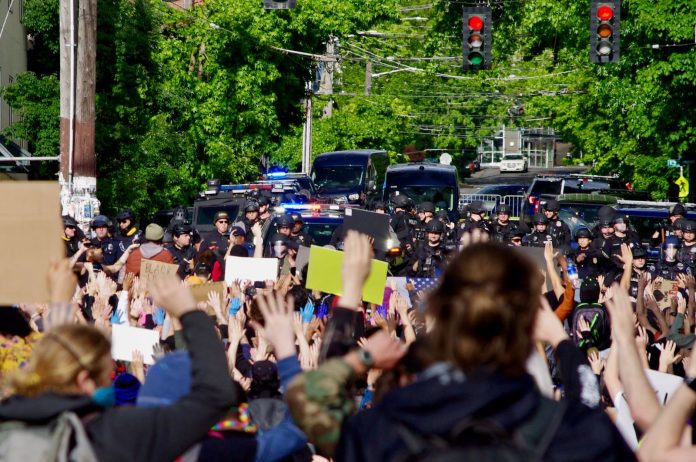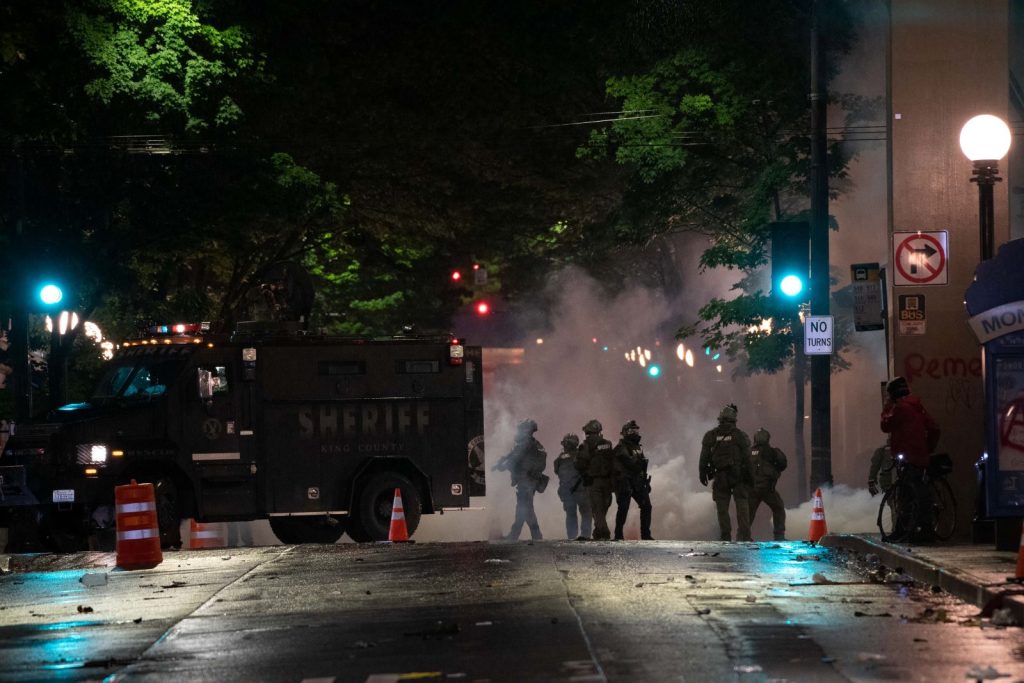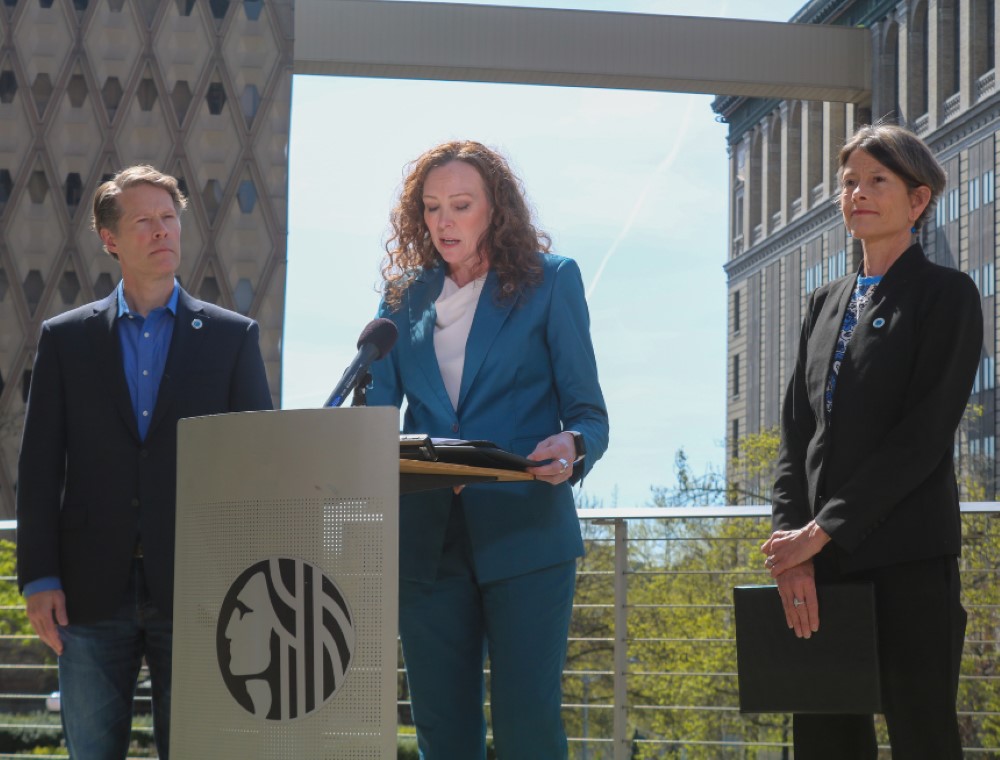
The historic case of 50 Black Lives Matter protesters came to a close on Wednesday with the announcement of a $10 million settlement. The plaintiffs brought a suit against the City of Seattle and the Seattle Police Department (SPD) for use of excessive force during the widely peaceful protests in the summer of 2020. The case was resolved in mediation before going to trial.
In a press conference announcing the settlement, the plaintiffs’ attorney, Karen Koehler of Stritmatter Kessler Koehler Moore, said the judge ordered them to participate in multiple mediations before going to trial. Koehler also said the City had already spent $30 million defending this case.
“This decision was the best financial decision for the City considering risk, cost, and insurance,” said City Attorney Ann Davison in a statement. The case has been ongoing since September of 2020. The City did not admit any wrongdoing in this case.
The George Floyd protests filled the streets of Seattle in the summer of 2020 as protesters spoke out against the brutal murder of George Floyd at the hands of police. They wanted to bring attention to the pattern of police brutality experienced throughout the country, one that has a disparate and particularly devastating impact on Black and brown communities.
The Seattle Police Department was noteworthy in its violent response to these protests. SPD deployed tear gas in residential neighbors, wreaking havoc on the health of both protesters and people simply living in their homes. SPD also liberally used other less lethal weapons such as blast balls, flash bangs, and pepper spray against peaceful protesters. In fact, the City was held in contempt of court because of continued misuse of these weapons.
“They were protesting against the police,” Koehler said. “And the police took it personally.”

Medics and journalists were both targeted during these protests. And important details around the abandonment of the East Precinct and the infamous Proud Boys ruse didn’t come to light until 2022, a year and a half after they had happened.
The Office of Police Accountability reported that 40% of all SPD sworn officers received at least one complaint in 2020.
Even the Office of the Inspector General’s final report on the 2020 protests said SPD should “apologize” to protesters for its response.
The protestors represented in this case experienced an array of debilitating injuries, including cardiac arrest, a seizure and coma, a partially blown off finger, permanent hearing loss, broken bones, concussions, and wounds.
At the press conference, Abie Ekenezar, a military veteran and one of the plaintiffs, lamented how difficult the process had been: “No one should have to fight for our rights here. It doesn’t make sense.”
Dr. Clifford Stott, an expert hired by the City to analyze the early days of the protests, said he had not seen that level of aggressive violent police response against protesters in any democratic state.
As part of the settlement, the City had initially agreed to look into reinstating Black Star Farms. Otherwise known as the Black Lives Matter Memorial Garden, Black Star Farms was recently removed from its location in Cal Anderson Park early in the morning on December 27. The plaintiffs wanted the opportunity to memorialize the 2020 protests in a way that was meaningful to them by saving the garden. However, the City ultimately decided to refuse this request, which some plaintiffs felt meant the City was going back on its word.
Elected on a hardline platform heavily based on the widely disproven broken windows theory, Davison suggested the settlement would free up resources for her other initiatives, which include ramping up prosecution of people using drugs in public, cracking down on graffiti artists, and demanding the right to sweep encampments without offering shelter.

“This settlement resolves the majority of the remaining claims arising out of the 2020 demonstration period and is a big step toward allowing the City to focus on the important work of today, while moving forward from events four years ago,” Davison said.
Still, Koehler thinks a $10 million settlement is impactful. And if possible, she’d like to release the hundreds of depositions taken for the case to the public. The City will also make a list of changes that have occurred as a result of the protests publicly available.
“No amount of money will justify what SPD and the City did and continue to do,” one of the plaintiffs said.
Meanwhile, residents of Seattle continue to foot the ever increasing bill for SPD’s behavior even while the City has instituted a hiring freeze and faces a $229 million budget deficit in 2025. SPD is one of the only departments exempt from the freeze, and Mayor Bruce Harrell and councilmembers allied with him have touted a goal to hire 500 police officers — although progress has been slow toward that goal given the national shortage of police officers.
And as we’ve seen with the 2018 SPOG contract, the consent decree, and a contemptuous police force, thus far the depth of change demanded by protesters and community advocates has been slow to come.
“Shame on the City of Seattle,” Koehler said.
Amy Sundberg is the publisher of Notes from the Emerald City, a weekly newsletter on Seattle politics and policy with a particular focus on public safety, police accountability, and the criminal legal system. She also writes science fiction, fantasy, and horror novels. She is particularly fond of Seattle’s parks, where she can often be found walking her little dog.

